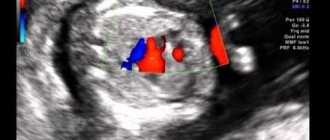Tumor markers are specific substances found in the blood and urine, which can be both waste products of the tumor and substances synthesized by healthy cells in response to the invasion of cancer cells. Detection of tumor markers in the body makes it possible to diagnose the oncological process at an early stage and monitor the dynamics of pathology during treatment.
What are tumor markers
Tumor markers (TM) are specific biological substances that are produced by tumor cells during growth and vital activity or by the body in response to tumor development.
Moreover, they can be qualitatively and quantitatively determined in biological fluids of the body (blood, urine, etc.). Nowadays, various types of tumor markers are used for the diagnosis, treatment and monitoring of patients with tumor diseases, including the detection of metastases and relapses.
OM are divided into:
- tumor-specific - characteristic only of cancer cells, not normally produced,
- associated with a tumor - are also present in normal cells, but with the development of a tumor their level increases sharply.
About 200 similar substances with greater or lesser organ- and tumor-specificity are already known. For example, CA 72-4 is highly specific for gastric cancer, and PSA is highly specific for prostate cancer. However, more often OM does not have such specificity, so it is recommended to test for several tumor markers at once.
Based on their biological functions, the following OMs are distinguished:
- Oncofetal antigens are substances characteristic of embryonic tissues that appear on the surface of cells during their differentiation. In adults, their level is very low, increases only with the growth of the tumor and depends on its size. Their determination is important for diagnosis and prognosis of the course of the disease, as well as for monitoring the effectiveness of therapy. Examples: carcinoembryonic antigen (CEA), alpha-fetoprotein (AFP), human chorionic gonadotropin (hCG), pregnancy beta protein, CA 125, CA 15-3, CA 19-9 and others.
- Enzymes are also characteristic of embryonic tissues. Some of them continue to perform certain functions in adults (for example, lactate dehydrogenase), their determination helps to establish the location of the primary tumor. The role of other enzymes in the formed organism is unknown (tissue polypeptide antigen, neuron-specific enolase), their level increases in poorly differentiated tumors.
- Hormones are produced by cells of the endocrine glands in which tumors develop, or by other organs, which does not occur normally. Most often used to monitor treatment.
- Receptors - an increase in their number is characteristic of hormonally active tumors. These markers are tissue markers and are not detected in the blood (only in biopsy material).
- Other compounds do not belong to any of the previous groups; they are normally present in the body, but with the development of cancer, their level increases sharply (ferritin, immunoglobulins, etc.).
Sources
- Inaba S., Shimozono N., Yabuki H., Enomoto M., Morishita M., Hirotsu T., di Luccio E. Accuracy evaluation of the C. elegans cancer test (N-NOSE) using a new combined method. // Cancer Treat Res Commun - 2021 - Vol27 - NNULL - p.100370; PMID:33901923
- Huang Z., Chen L., Wang Y., Fu L., Lv R. Molecular markers, pathology, and ultrasound features of invasive breast cancer. // Clin Imaging - 2021 - Vol79 - NNULL - p.85-93; PMID:33895560
- Qiu X., Zhang H., Zhao Y., Zhao J., Wan Y., Li D., Yao Z., Lin D. Application of circulating genetically abnormal cells in the diagnosis of early-stage lung cancer. // J Cancer Res Clin Oncol - 2021 - Vol - NNULL - p.; PMID:33893839
- Zhang Y., Wu Q., Xu L., Wang H., Liu X., Li S., Hu T., Liu Y., Peng Q., Chen Z., Wu X., Fan JB. Sensitive detection of colorectal cancer in peripheral blood by a novel methylation assay. // Clin Epigenetics - 2021 - Vol13 - N1 - p.90; PMID:33892797
- Koshiaris C., Van den Bruel A., Nicholson BD., Lay-Flurrie S., Hobbs FR., Oke JL. Clinical prediction tools to identify patients at highest risk of myeloma in primary care: a retrospective open cohort study. // Br J Gen Pract - 2021 - Vol - NNULL - p.; PMID:33824161
- Chantzichristos D., Svensson PA., Garner T., Glad CA., Walker BR., Bergthorsdottir R., Ragnarsson O., Trimpou P., Stimson RH., Borresen SW., Feldt-Rasmussen U., Jansson PA., Skrtic S., Stevens A., Johannsson G. Identification of human glucocorticoid response markers using integrated multi-omic analysis from a randomized crossover trial. // Elife - 2021 - Vol10 - NNULL - p.; PMID:33821793
- Lewin J., Kottwitz D., Aoyama J., deVos T., Garces J., Hasinger O., Kasielke S., Knaust F., Rathi P., Rausch S., Weiss G., Zipprich A., Mena E. ., Fong T.L. Plasma cell free DNA methylation markers for hepatocellular carcinoma surveillance in patients with cirrhosis: a case control study. // BMC Gastroenterol - 2021 - Vol21 - N1 - p.136; PMID:33765926
- Chiancone F., Fabiano M., Carrino M., Fedelini M., Meccariello C., Fedelini P. Impact of systemic inflammatory markers on the response to Hyperthermic IntraVEsical Chemotherapy (HIVEC) in patients with non-muscle-invasive bladder cancer after bacillus Calmette-Guérin failure. // Arab J Urol - 2021 - Vol19 - N1 - p.86-91; PMID:33763253
- Ladak Z., Garcia E., Yoon J., Landry T., Armstrong EA., Yager JY., Persad S. Sulforaphane (SFA) protects neuronal cells from oxygen & glucose deprivation (OGD). // PLoS One - 2021 - Vol16 - N3 - p.e0248777; PMID:33735260
- Chen C., Yang H., Cai D., Xiang L., Fang W., Wang R. Preoperative peripheral blood neutrophil-to-lymphocyte ratios (NLR) and platelet-to-lymphocyte ratio (PLR) related nomograms predict the survival of patients with limited-stage small-cell lung cancer. // Transl Lung Cancer Res - 2021 - Vol10 - N2 - p.866-877; PMID:33718028
In what cases is it indicated to conduct a blood test for tumor markers?
- Diagnosis of cancer by blood test . Such studies can be prescribed for preventive purposes to assess the risk of developing the disease (if there is evidence of the hereditary nature of a particular pathology) and to detect cancer at an early (pre-symptomatic) stage. For example, identifying a mutation in the APC gene is a fairly accurate indicator of the presence of hereditary adenomatous polyposis and colon cancer.
- Determining the prognosis of an already identified cancer (prognostic tests). The levels of tumor markers and their changes give reason to assume how the tumor will behave, how quickly it will develop and how aggressive it will be. These tests include the PSA test, which helps predict the malignant potential of prostate cancer.
- Detection of tumor relapses or metastases. An increase in the level of OM in the blood of a person who has undergone treatment for a tumor disease may indicate the likelihood of re-development of the tumor at the site of the removed one or distant metastases, when the cells of the primary tumor spread throughout the body.
- Assessment of tumor sensitivity to a specific therapy method and treatment results (predictive and pharmacogenetic tests). Helps to adjust the treatment regimen and choose the optimal method. Can determine the level of toxicity of chemotherapy and the expected response to treatment with cytostatics or targeted drugs.
- Management of cancer patients - identification of remnants of tumor tissue, metastases, monitoring the course of the disease and clinical observation.
Types of tumor diseases
Cancer is a very old disease, which was first described back in 1600 BC. e. The name cancer itself was introduced by Hippocrates. These malignant tumors arise due to the transformation of normal cells, which begin to multiply uncontrollably. If the immune system does not begin to recognize the presence of a tumor in time, then metastases develop in all tissues and organs. Benign tumors, in turn, are distinguished by the fact that they do not metastasize, and therefore they do not pose a danger to life, however, at the same time, the possibility of degeneration of a benign tumor into a malignant one remains. The final diagnosis can be made after histological examination. Without the necessary treatment, malignant tumors can lead to the death of the affected person.
Symptoms of a tumor disease can vary and depend on the location of the tumor. In the early stages, the tumor does not cause any sensation, and pain appears only in the later stages. The most common symptoms are:
- loss of appetite;
- weight loss;
- exhaustion;
- anemia;
- immunopathological conditions;
- the occurrence of unusual compactions and swellings;
- inflammation;
- jaundice;
- bleeding.
With metastases, depending on where they develop, bone pain occurs and bone fractures often occur; cough (sometimes with blood); the liver and lymph nodes enlarge, etc.
Malignant tumors are divided into the following types (depending on the cells from which they are formed): carcinoma, sarcoma, melanoma, lymphoma, leukemia, glioma, teratoma, choriocarcinoma, etc.
According to international studies, the most common types of cancer are identified:
- Lung cancer ranks first in both the number of cases and the number of deaths from it. The first symptoms appear in the form of hemoptysis, chest pain, weakness, decreased performance, and cough. The main cause of the disease is smoking tobacco. There are four stages in the development of the disease:
- on the first, the tumor is up to 3 cm and is located in only one segment of the lung;
- in the second, the tumor is up to 6 centimeters, also located in one part of the organ. Metastases develop;
- in the third, the tumor reaches a size of more than six centimeters and is already beginning to move to the adjacent lobe of the lung. Metastases have more obvious manifestations;
- at the fourth stage, the cancer extends beyond the organ and spreads to neighboring organs.
Treatment for lung cancer can be carried out using various methods and is prescribed depending on the state of health, the extent of the disease and many other factors.
- Mammary cancer . This disease ranks second in terms of the number of patients and fifth in terms of mortality from it. Mostly the female half of the population suffers from breast cancer. The risk group includes women who have not given birth, as well as those who had their first birth after 30, and smokers. Also an important role is played by the presence of a family history, diabetes mellitus, hypertension and obesity. Symptoms of breast cancer:
- seals;
- various discharge from the nipple;
- change in the structure or color of the breast.
- The third place in the number of cases is colon cancer.
- Although stomach cancer ranks fourth in terms of incidence of diseases, it is in second place in terms of mortality.
What tumor markers are determined in screening programs?
Oncotests can be prescribed to patients individually as part of a general examination plan. But there are already a number of tumor markers, the determination of which is included in mass (screening) programs. These are studies that are easy and inexpensive to conduct as part of annual preventive examinations for both men and women. In this way, risk groups that need further monitoring can be identified.
Examples of such studies:
- PSA (PSA) – prostate-specific antigen – a marker of prostate cancer.
- CA 125 - detects ovarian cancer.
- BRCA 1,2 is a gene mutation characteristic of hereditary ovarian and breast cancer.
International specialized organizations include new tests in their recommendations every year. Among them are the determination of some serological OMs (for example, CA-15-3, CA-27, CEA), histochemical (Her2, Ki67), and molecular genetic ones, such as Mammaprint.
What other tumor markers are used to diagnose cancer?
For dynamic monitoring of patients during treatment, OM is determined, which can indicate the effectiveness of the treatment, confirm the radicality of tumor removal or the occurrence of a second tumor.
To confirm the effectiveness of therapy, predictive and pharmacogenetic tests are required. Thus, it is mandatory to determine the tumor markers KRAS and EGFR in tumor tissue. This analysis will help you choose a drug for chemotherapy. In the presence of a mutant KRAS gene, the use of monoclonal antibodies for targeted therapy of colorectal cancer is absolutely ineffective. On the other hand, a positive test result for an EGFR mutation may be the basis for the prescription of anti-EGFR drugs (for non-small cell lung cancer - NSCLC).
To predict and diagnose tumor aggressiveness in breast cancer, HER2 is determined. If the test is positive, the tumor cells will be most sensitive to the drug Herceptin.
The EML4-ALK fusion test in NSCLC helps determine the sensitivity of cancer cells to crizotinib. This has increased survival and freedom from relapse in patients with this aggressive cancer.
In melanoma, it is important to analyze mutations in the BRAF V600E gene, the positive result of which indicates the effectiveness of vemurafenib in such patients. This test also launched a series of developments of targeted drugs for the treatment of resistant forms of the disease.
Why us
- Doctors. The specialists of our medical center are highly qualified and have experience, including in foreign clinics.
- All major tumor markers We conduct a wide range of studies on tumor markers of various organs
- Expert diagnostics. The hospital’s modern diagnostic complex allows both screening and more in-depth studies (radiation, endoscopic, genetic) to determine cancer diseases with high accuracy.
- Genetic laboratory Our geneticists will help you select a genetic diagnostic method to identify a hereditary predisposition to breast, ovarian, gastrointestinal, skin, blood, kidney, prostate and many other types of cancer.
- Complexity. Our own high-tech treatment base allows us not only to diagnose, but also to successfully treat cancer pathologies using chemotherapy (including targeted drugs) and surgery of any complexity.
- We value your time. All treatment and diagnostic departments are located in one hospital building, which saves your time and effort.
You can see prices for services
How reliable is a blood test for tumor markers?
Tests for tumor markers are quite sensitive, but the accuracy of diagnosis depends on comparison with the clinical picture, the results of other studies and a set of tests for tumor markers. In addition, some OM can be found in both malignant and benign tumors, or even in inflammatory processes.
When assessing test results, experts take into account that
- OMs are tissue specific rather than organ specific, making tumor location more difficult to determine than origin. For example, CA 19-9 can indicate cancer of both the pancreas and reproductive organs.
- Pathology of the liver and kidneys, which are involved in the transformation of OM in the body, can distort the results.
- The dynamics of changes in the level of one or another OM when monitoring patients with cancer is more important than a one-time determination of the marker.
These facts suggest that even a negative test for OM does not guarantee the absence of a tumor; repeated blood tests for cancer must be performed in the same laboratory, and the results may be affected by other diseases, violations of the preparation or conduct of the study. In addition, it is imperative to compare tests and clinical data.
Tumor markers. The view of a practical oncologist. Laboratory justifications.
Despite the fact that oncologists and medical institutions in Russia specializing in the diagnosis and treatment of cancer are guided in their work by the official recommendations of the Ministry of Health of the Russian Federation and the Association of Oncologists of Russia, based on the provisions of the World Health Organization (WHO), discussion of the diagnostic significance of tumor markers in the professional environment has been going on for more than 30 years. Doctors’ opinions often differ, despite the existence of policy documents. First of all, accusations of imposing unnecessary tests on patients are brought against independent laboratories and commercial medical centers that offer cancer screening to patients. However, advertising models about carrying out certain promotions related to tests for tumor markers do not always imply a call for everyone, without exception, to carry out cancer screening - an expensive diagnostic method that is justified only in some clinical cases. The leading private medical company INVITRO offers a wide range of services (including blood tests for tumor markers), and for many years has clearly and openly stated its position on the need for such studies: they should only be prescribed by an oncologist in each specific clinical situation, together with other types of studies .
Maria Valerievna Pushkareva, diagnostic oncologist.
— Maria Valerievna, the INVITRO company offers a large number of studies for tumor markers, and it is no secret that such tests have become very popular among patients.
Some come on their own, others are referred by a doctor. Many people believe that determining tumor markers helps detect cancer at an early stage. Is this true, and in what cases is it recommended to undergo cancer screening? — INVITRO doctors categorically do not recommend and have not recommended conducting marker oncology screening (and especially without a doctor’s referral) for the early detection of cancer. We offer examination for tumor markers only to those patients who, based on the results of instrumental examination methods, suspect the presence of tumor pathology in the body (as a clarifying diagnosis), and to patients who already have a diagnosis of “malignant neoplasm” in the anamnesis (as a prognostic factor, to assess the effectiveness of therapy and as monitoring). Although recently, even among doctors, it is increasingly common to hear the deeply erroneous opinion that marker-based oncological screening helps to detect cancer at an early stage. Unfortunately, it is not. Tumor markers (TM) are a most valuable test for an oncologist and an important component of the entire diagnostic process in oncology. It should be understood that there is no single marker for all malignant neoplasms. No OM has 100% specificity and sensitivity sufficient to recommend it as a screening test for the presence of malignancy in the general patient population, and therefore should not be used as a method for the primary diagnosis of malignancy. With tumors of different organs, OMs characteristic of them appear. They occur with greater or lesser consistency in many, but not all, patients with the same type of cancer. Moreover, the same OM can be detected in several types of neoplasms. They can also be found in patients with benign tumors, with viral diseases, with autoimmune disorders, with inflammatory diseases, and even in healthy people. The use of OM for the differential diagnosis of malignant tumors (hepatocellular liver cancer or solitary metastasis of colorectal cancer) is justified; benign and malignant formations; as monitoring (dynamic observation) in patients treated with a diagnosis of oncology; in patients undergoing palliative treatment with a diagnosis of oncology to assess the effect of the treatment (drug treatment, radiation therapy, cytoreductive surgical interventions).
— What official sources regulate the justified use of OM?
— In Russia there is the “Association of Oncologists” - a national union that is engaged in research activities and periodically issues clinical recommendations for oncologists, which guide them in their work. In the “Clinical Guidelines” for the diagnosis and treatment of tumors of the latter, you can find all the information on the diagnosis and treatment of oncological diseases.
— How often do you, as a practicing oncologist, refer your patients to OM studies?
— An oncologist is a second-level specialist. Patients who come to us have already undergone a certain list of examinations, as a result of which some extensive process in a particular organ has been identified. In such situations, OM is used as an additional examination method. Initially, a complex of several OM can be used to identify a tumor and assess the extent of the process in a group of immobile patients, when the presence of a malignant process can be suspected based on their somatic status. The degree to which the reference values of OM are exceeded helps the oncologist to indirectly assess the extent of the process. In addition, OM are highly significant in terms of assessing the effect of the treatment (we compare OM values before and after treatment). It is also advisable to use OM when monitoring patients with clinical group III, treated with a diagnosis of “oncology” during follow-up examinations. An increase in OM indicators in patients in this group may indicate a relapse of the disease at the preclinical stage of the disease manifestation and requires a more thorough examination.
In my practice, I often encountered marker-negative tumors. The patient may have stage IV malignant neoplasm, but the OM indicators by organ affiliation may be within the reference values or have minor deviations. Also, in the practice of a clinician, there may be situations where an increase in OM indicators may be due to an exacerbation of a chronic disease or against the background of drug treatment for a concomitant pathology. Therefore, the doctor prescribes one or another OM depending on each specific clinical situation.
— In what cases is it still necessary for a doctor to prescribe OM for early detection of cancer?
— In accordance, again, with the Clinical Guidelines of the “Association of Oncologists of Russia,” the use of PSA as a screening method for detecting prostate cancer in men is justified. In women with tumors in the pelvis, the ROMA index is used to diagnose ovarian cancer. A stool occult blood test is used to screen for colorectal cancer.
— How can it be dangerous for a patient to self-prescribe an OM test for the early detection of cancer in his understanding?
Having received the OM result within the reference values, the patient may become complacent and not consult a clinician in time, which may subsequently lead to the detection of a malignant tumor at a late stage.
Natalya Aleksandrovna Igonina, Ph.D., leading specialist of the Laboratory of Biochemistry and Immunochemistry of the Technological Department of INVITRO.
— Natalya Aleksandrovna, from a technological point of view, what arguments exist that do not allow the use of tumor marker studies for widespread use for cancer screening?
“In this case, it’s not about the quality of technology, but about the nature of the tumor-associated markers themselves. To clarify this, let’s consider the concepts of “sensitivity” and “specificity” of a test. These terms can be used in analytical and clinical aspects. Modern methods for studying tumor markers, which are used in INVITRO (we are now talking mainly about proteins found in the blood, produced by tumor cells), are based on the immunological principle of recognition of complex molecules using chemiluminescent labels and have excellent analytical characteristics - high analytical sensitivity and high analytical specificity. This means that they are able to detect the tumor marker of interest in a sample at a very low concentration, very accurately distinguishing its molecules from other molecules with a similar structure.
But the main characteristics for the practical use of any tumor marker are its clinical sensitivity (the ability to identify all people with the type of tumor with which it is associated) and clinical specificity (the ability to simultaneously identify all people who do not have such a pathology). None of the modern tumor markers, when used as a separate study, yet has both 100% clinical sensitivity and 100% clinical specificity.
Reference values for laboratory tests are usually determined as limits within which 95% of those examined in a fairly large group of practically healthy people fit, or, on the basis of clinical studies, the optimal diagnostic threshold is selected, which allows dividing the groups of “conditionally sick” and “conditionally healthy” with the most effective combination of probabilities. . Therefore, it is certainly clear that results exceeding the threshold may also occur in part of the group of people without the pathology being studied (“false-positive” results). To better understand the practical value of tumor markers, such test characteristics as “positive predictive value” (the percentage of true positive results among all positive results in the group examined) and negative predictive value (the percentage of true negative results among all negative test results) are also useful. It is clear that these indicators for tumor markers will be different when using these tests specifically in a group of patients with risk factors than when examining a random group as a general population screening test. For the PSA marker total (prostate-specific antigen), at a threshold of 4 ng/ml, the positive predictive value as the only test in a high-risk group is about 40%.
The concept of specificity of tumor markers also exists in relation to a specific tissue or organ (that is, the possible localization of the tumor). Many tumor markers can be produced in different tissues, without providing accurate information about the localization of a possible tumor process.
— Today, are there any biochemical tests that can detect a tumor with 100% accuracy?
— As we have already said, an ideal tumor marker should have 100% clinical specificity and 100% clinical sensitivity, but to date such tests do not yet exist. Leading reagent manufacturers take the performance testing of the tests they offer seriously. They indicate in the materials for the reagents the most detailed analytical characteristics of their tests - analytical sensitivity, reproducibility of research results (possible variability of the result when identical samples are taken in the same series and over time on different days during the shelf life of the reagent), possible influence or lack thereof on potential sources of nonspecific interference and more. The results of studies on the clinical sensitivity and specificity of the test using the proposed reagents and the existing limitations of using the test in relation to the method are presented. We always provide such data in our information materials (on the official INVITRO website, in information letters, in a published reference book on laboratory tests) to help patients properly prepare for the study and doctors to correctly interpret research results.
— Is it possible to at least conditionally determine the expected effectiveness of biochemical cancer screening using tumor markers in the general population?
— For such a calculation, it is necessary to take into account the prevalence of this pathology. Let's assume that the prevalence of a certain cancer in any population is 1:1000 people, and according to its characteristics, the tumor marker has 95% clinical sensitivity and 95% specificity (that is, good characteristics). Purely mathematically, it can be calculated that under such conditions, examining a random group of 1000 people, among whom one person has a tumor, with a high degree of probability we will identify this patient, but 50 people in such a group can get a positive test result in the absence of any cancer . For rarer types of pathology and with worse clinical sensitivity and specificity of the test, the value of tumor marker studies when used for population screening will be even lower. But false positive results lead to unfounded fears, costs for additional research, and other negative consequences.
The use of these tests in a group of people specifically examined according to doctor’s orders (if the patient has risk factors for a certain type of disease that are clear to the specialist or clinical signs identified during questioning and examination) will show significantly higher efficiency in combination with the most informative types of examinations for a given pathology , both laboratory and instrumental.
— How does the result depend on the research method?
— It should be remembered that the results of tumor marker studies may vary to some extent depending on the research method used. It is important to take into account the method of studying the marker; in order to control the dynamics of the indicator, use one method and one laboratory; be sure to take into account the possible dependence on the method when interpreting the results of studies performed over time in different laboratories. It should also be noted that conclusions and recommendations indicating quantitative indicators (including reference limits, diagnostic thresholds) developed using one immunoassay technology cannot always be directly transferred to other technologies. Immunoassay methods for many markers are not yet sufficiently standardized for this purpose.
How are blood tests performed for tumor markers?
There are two types of studies on OM: biochemical and molecular genetic.
The first includes: enzyme-linked immunosorbent assay (ELISA), radioimmunoassay (RIA) and immunofluorescence (ILA). All of them are based on the fact that specific monoclonal antibodies can bind to tumor marker molecules. ELISA is convenient in that it can be carried out entirely using an automatic analyzer, which provides accuracy and reliability. For this method, the maximum number of test systems have been developed that determine all kinds of OM. In addition, the relatively low cost of such testing makes it possible to use it in screening programs.
The second type includes polymerase chain reaction (PCR), FISH (fluorescent hybridization) and sequencing, which help identify DNA or RNA abnormalities. The disadvantage of this method is the fact that for each OM it is necessary to select its own detection method.
One of the most modern technologies in determining OM is microchips with nanoprobes. They can detect protein molecules (hormones, antigens, antibodies), DNA and RNA molecules. That is, several tumor markers can be determined simultaneously in one blood sample. This makes it possible to expand screening studies and significantly reduce the time spent on them. Using automatic equipment, it is possible to determine up to 30 thousand OM on one chip in 6 hours. It is also possible to combine markers into groups depending on the structure or size of the molecules.
A specific test regimen for tumor markers is recommended:
- OM levels are determined before treatment begins, and those that are elevated are monitored over time.
- At the end of treatment or after surgery, 2 to 10 days (the half-life of OM) must pass before further tests are performed.
- In the future, the frequency of marker determination is once every 1–3 months.
- It is imperative to conduct an analysis for tumor markers if relapse or metastases are suspected.
Our clinics in St. Petersburg
Structural subdivision of Polikarpov Alley Polikarpov 6k2 Primorsky district
- Pionerskaya
- Specific
- Commandant's
Structural subdivision of Zhukov Marshal Zhukov Ave. 28k2 Kirovsky district
- Avtovo
- Avenue of Veterans
- Leninsky Prospekt
Structural subdivision Devyatkino Okhtinskaya alley 18 Vsevolozhsk district
- Devyatkino
- Civil Prospect
- Academic
For detailed information and to make an appointment, you can call +7 (812) 640-55-25
Make an appointment
A benign or malignant neoplasm secretes a special cancer antigen. In this regard, when different tumors arise in the body, their own tumor markers appear. Tumor marker studies are also carried out in case of diagnosis of the disease and its treatment. It will allow doctors to choose subsequent tactics and, if necessary, prescribe additional drugs.
Preparing for analysis
To diagnose cancer using a blood test, material is taken from a vein. In this case, the conditions for storing the serum before the study must be observed, and it must be carried out no later than an hour after collection.
If at the time of the analysis there are signs of inflammation, then you need to report this, as the test results may become false positive. It is better to carry it out a week after the process has subsided. The same applies to the period of menstruation.
You should not drink alcohol the day before the test.
Taking ascorbic acid, some hormonal drugs, nitrates and other medications can also affect the level of OM. The doctor will tell you how long before the test you should stop taking them.
It is better to take all subsequent tests in the same laboratory so that the dynamics can be assessed.









